Stories from and about library student employees and interns.
Student Stories
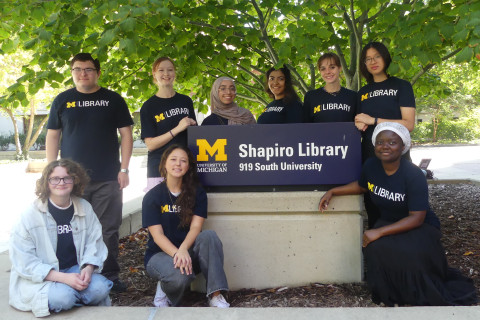
Posts in Student Stories
Showing 41 - 50 of 141 items
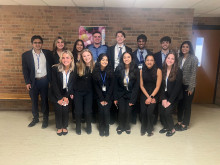
- Suraj Ranjit Menon
Team PACT stands for “Preventive and Accessible Cervical Cancer Testing” and is an M-HEAL project team. We formed in the Fall of 2021.
Team PACT is partnered with Korle-Bu Teaching Hospital in Ghana to develop a method for
cervical cancer screening that is effective, non-invasive, and cost-efficient. Our device
accomplishes this by collecting urine to be screened for high-risk HPV strains. Our mission is
to design a cervical cancer screening urine collection device for genotypic females aged
21-65 who are unable or uncomfortable with getting tested by a medical professional.
Team PACT is partnered with Korle-Bu Teaching Hospital in Ghana to develop a method for
cervical cancer screening that is effective, non-invasive, and cost-efficient. Our device
accomplishes this by collecting urine to be screened for high-risk HPV strains. Our mission is
to design a cervical cancer screening urine collection device for genotypic females aged
21-65 who are unable or uncomfortable with getting tested by a medical professional.
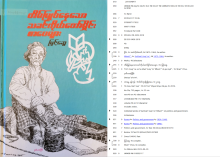
- Win Kyaw
From mid-May to mid-July this summer, I joined the U-M Library’s International Studies team as their Southeast Asian studies librarianship intern. I applied to the inaugural internship program, hoping to build upon my previous work experiences in metadata and cataloging services at three different academic libraries in California and Massachusetts. As a student copy cataloger and a part-time assistant, I mainly proofread certain parts of bibliographic records that are considered crucial (e.g. book titles, page numbers, etc.) and transferred records from a shared online database to a local one used by the U-M Library. In other words, I did what is called copy cataloging and other entry-level tasks involved in processing new library materials. In short, I arrived in Ann Arbor with the goal of expanding my understanding of librarianship, which was limited to a few library jobs I have had.
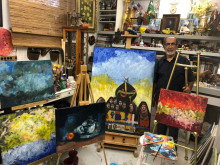
- Zainab A Hakim
- Serena Safawi
The Shadow and Light project seeks to memorialize Iraqi academics who were assassinated between 2003 and 2011. This summer we worked on curating the Shadow and Light materials to be displayed in Hatcher Graduate Library and creating an accompanying online exhibit.
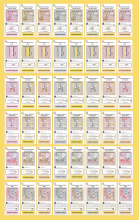
- Alex Warren
My journey with learning about and applying web content and video game accessibility standards to Hatcher Haunts, a visual wayfinding mobile game prototype.
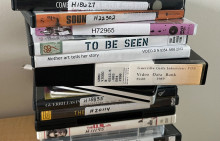
- Yuchen Wu
This blog post documents a student's journey through a Michigan Library Scholars project. Her research focuses on the identification, watching, evaluation, and selection of documentaries in the University of Michigan's library that are related to art and resistance. The selected documentaries are presented as an annotated bibliography to instructors for course teaching purposes during the Fall 23 Arts & Resistance theme semester.
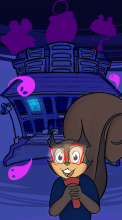
- Cecilia Valentina Ledezma Herrera
I was a Michigan Library Scholar during the summer of 2023 in the "Gamified Directions to the Library" project. Our aim was to create an aid for students to learn to navigate the library, so we made a prototype for a video game. In this blog post, I detail my journey as the Art and Story lead for the game "Hatcher Haunts."

- Shao-Chi Ou
I was a Summer 2023 Michigan Library Scholar in the project “Gamified Directions to the Library: Developing a Training Module.” We developed an educational video game that taught users about navigating Hatcher and different library services. In this project I mainly worked on a mini game where users were asked to interact with the physical space, and a pamphlet that had all important navigation and service information and could turn into a 3D paper model. I gained a lot of new perspectives on how to interact with the physical and how to present it through media like video games and papers.
•
- Mary Elizabeth Silva-Garza
Chicana poet and cultural theorist Gloria Anzaldúa says: “Making anthologies is also activism. In the process of creating the composition, the work of art, you’re creating the culture. You’re rewriting the culture, which is very much an activist kind of thing.”
Similarly, I have curated this presentation as an anthology - from the composers and artists that I have commissioned and programmed, to the interviews, images, the words of Latina scholars, and parts of my own story. As a person of color, as a Latina, a chicana. I have learned that telling our stories is a form of activism. This is why in many ways, silencing us is also an act of violence.
I am curating this collaboration of new music by Latina composers to facilitate a public platform and to open a dialogue about Latina culture, identity, and experiences in higher education, specifically in the field of western classical music. This project enriches the art form by contributing a diverse collection of new works to the repertoire, addressing societal issues and promoting Latina artists in classical music.
Similarly, I have curated this presentation as an anthology - from the composers and artists that I have commissioned and programmed, to the interviews, images, the words of Latina scholars, and parts of my own story. As a person of color, as a Latina, a chicana. I have learned that telling our stories is a form of activism. This is why in many ways, silencing us is also an act of violence.
I am curating this collaboration of new music by Latina composers to facilitate a public platform and to open a dialogue about Latina culture, identity, and experiences in higher education, specifically in the field of western classical music. This project enriches the art form by contributing a diverse collection of new works to the repertoire, addressing societal issues and promoting Latina artists in classical music.

- Kristen Marie Cummings
I am a 2022-2023 recipient of a University of Michigan Library Student Mini Grant. I am using the grant to support my mixed-methods dissertation, which aims to learn how we can improve rural student college access and connect rural high schoolers with postsecondary opportunities that align with their goals. Through a randomized controlled trial (RCT), I am testing how an informational intervention—providing rural seniors with information about a statewide free tuition program—affects their college-going behavior. I will contextualize these results with findings from focus groups with rural high school seniors about their knowledge of the program and their perspectives on the programs’ affordances and limitations.

- Joy Huang
Pressure ulcers are injuries to the skin and underlying tissue that form due to prolonged pressure. Bedridden patients are the most susceptible to these wounds, so hospital nurses need to turn them every few hours to alleviate the built-up pressure. In public hospitals like San Juan de Dios in Guatemala City, there is a high incidence of these wounds due to understaffing.
Currently, hospitals in Guatemala have egg carton foam mattresses intended to reduce the incidences of bedsores. However, even with these mattresses, patients who are not turned would still develop preliminary pressure ulcers in as little as six hours. Additionally, it is difficult for nurses in this hospital to prioritize and communicate which patients need to be turned because they use paper and pencil to track the patients. Thus, current prevention methods would benefit from engineering solutions that reduce the physical and mental demand on nurses to turn patients.
Currently, hospitals in Guatemala have egg carton foam mattresses intended to reduce the incidences of bedsores. However, even with these mattresses, patients who are not turned would still develop preliminary pressure ulcers in as little as six hours. Additionally, it is difficult for nurses in this hospital to prioritize and communicate which patients need to be turned because they use paper and pencil to track the patients. Thus, current prevention methods would benefit from engineering solutions that reduce the physical and mental demand on nurses to turn patients.